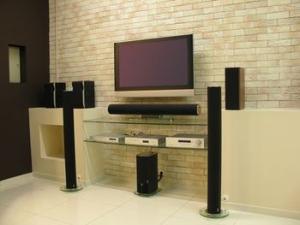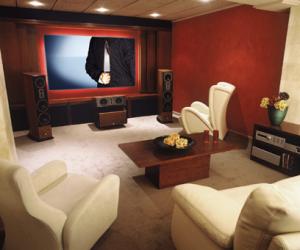HDTV Explained
 An analog TV signal in the U.S. has 525 scan lines for the image, and each image is refreshed every 30th of a second (half of the scan lines are painted every sixtieth of a second in what is called an interlaced display). The horizontal resolution is something like 500 dots for a color set. This level of resolution was amazing 50 years ago, but today it is rather passe. The lowest resolution computer monitor that anyone uses today has 640x480 pixels, and most people use a resolution like 800x600 or 1024x768. We have grown comfortable with the great clarity and solidity of a computer display, and analog TV technology pales by comparison. All of the new satellite systems, as well as DVDs, use a digital encoding scheme that provides a much clearer picture. In these systems, the digital information is converted to the analog format to display it on your analog TV. HDTV and standard definition television (SDTV) are the two categories of display formats for television. HDTV is high-resolution digital television (DTV) combined with Dolby Digital surround sound (AC-3). HDTV is the highest DTV resolution in the new set of standards. This combination creates a stunning image with stunning sound. HDTV requires new production and transmission equipment at the HDTV stations, as well as new equipment for reception by the consumer. The higher resolution picture is the main selling point for HDTV. We now see 720 or 1080 lines of resolution compared to the 525 lines people used to watch. That is a huge difference!
An analog TV signal in the U.S. has 525 scan lines for the image, and each image is refreshed every 30th of a second (half of the scan lines are painted every sixtieth of a second in what is called an interlaced display). The horizontal resolution is something like 500 dots for a color set. This level of resolution was amazing 50 years ago, but today it is rather passe. The lowest resolution computer monitor that anyone uses today has 640x480 pixels, and most people use a resolution like 800x600 or 1024x768. We have grown comfortable with the great clarity and solidity of a computer display, and analog TV technology pales by comparison. All of the new satellite systems, as well as DVDs, use a digital encoding scheme that provides a much clearer picture. In these systems, the digital information is converted to the analog format to display it on your analog TV. HDTV and standard definition television (SDTV) are the two categories of display formats for television. HDTV is high-resolution digital television (DTV) combined with Dolby Digital surround sound (AC-3). HDTV is the highest DTV resolution in the new set of standards. This combination creates a stunning image with stunning sound. HDTV requires new production and transmission equipment at the HDTV stations, as well as new equipment for reception by the consumer. The higher resolution picture is the main selling point for HDTV. We now see 720 or 1080 lines of resolution compared to the 525 lines people used to watch. That is a huge difference!
HDTV which is the current format, provides a much higher quality display. The highest resolution format is 1080P. The other formats are 480I, 480P, 720I,720P, and 1080I. The P stands for progressive scanning, which means that each scan includes every line for a complete picture, and the i stands for interlaced scanning which means that each scan includes alternate lines for half a picture. These rates translate into a frame rate of up to 60 frames per second, twice that of conventional television. One of HDTV's most prominent features is its wider aspect ratio (the width to height ratio of the screen) of 16:9, a development based on research showing that the viewer's experience is enhanced by screens that are wider. HDTV pixel numbers range from one to two million, compared to SDTV's range of 300,000 to one million.
The bottom line is television viewing has never been better or more cost effective. The price we pay for television today is a small fraction of what Americans paid when television first came out.










